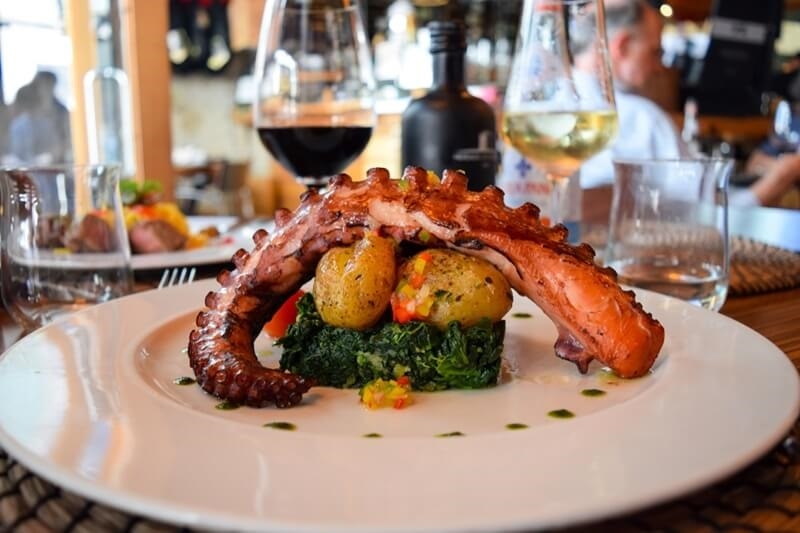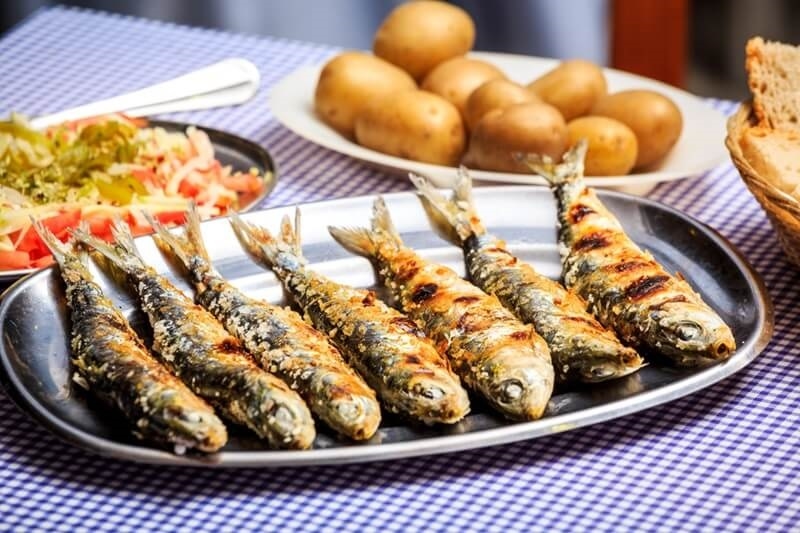
Portugal, with its huge Atlantic coastline that runs for over 1,700 kilometers, is a nation intrinsically connected to the sea. Not only does its culture and economy find expression in its seafaring history, but most of all, in its cuisine. American travelers can find a gastronomic experience as much as heritage. Portuguese seafood dishes are one of the most popular in Europe, where simplicity, freshness, and robust flavors come together. City markets and seaside resorts abound with a treasure trove of dishes, including Portugal octopus dishes and grilled sardines Portugal that reveal the fish heritage of the nation.
Portuguese seafood has a hallmark emphasis on quality ingredients and traditional preparation. Rather than overpowering flavor with heavy sauces, Portuguese cuisine maximizes allowing the natural flavor of the seafood to shine through. Ingredients are locally sourced, seafood brought fresh from the Atlantic or Algarve coast, which has Mediterranean influences.
Seafood is not merely an option as food in Portugal; it is culture and lifestyle. Portugal beachside dining turns into the focus for reunions with the family, festival celebrations, and even daily meals. From the beachside restaurants al fresco to the upscale restaurants, Portuguese seafood foods are a constant theme in Portuguese cuisine.

No Portuguese seafood meal is complete without mention of the grilled sardines of Portugal, or sardinhas assadas. A slender, oily fish with a summer season, it is best witnessed in conjunction with the Festival of St. Anthony, which takes place in Lisbon. Street vendors blanket the streets with sardines grilled on an open fire, and their smoky presence fills the air during the festival.
Octopus is yet another essential part of Portuguese seafood. Polvo à lagareiro and salads made from octopus are among the most common preparations. The octopus in polvo à lagareiro is roasted to tenderness using olive oil, garlic, and herbs, often accompanied by mashed potatoes that absorb the juices of the scrumptious dish. The dish bears testimony to Portuguese aptitude at combining humble ingredients to create something divine.
The Algarve is all about wonderful seafood, and one of its staples is the cataplana de marisco. So named because it is prepared in the unique copper cataplana pot, the cataplana is a meal in which ingredients are steamed collectively, but keep the unique flavor of each ingredient. The stew is typically prepared with a mixture of shellfish, such as clams, mussels, and prawns, and that is combined with tomatoes, onions, and herbs.
The most memorable moment when visiting Portugal is dining by the beach in Portugal. There are several restaurants by the beach in seaside resort towns, which expose customers to fresh seafood with the Atlantic breeze and sea views. If in a coastal fishing town or in a resort town, the combination of fresh catch and sea views elevates the dining experience.
Old Portuguese seafood foods are evidence of centuries of the art of food growing. Salted cod, or bacalhau, is perhaps the most renowned example. It has been employed in a million dishes, from bacalhau à brás (shredded cod, potatoes, and eggs) to bacalhau com natas (cod in creamy bake). They have passed from hand to hand, testifying to Portugal's ancient maritime and cultural heritage.
Other staples include amêijoas à bulhão pato (clams in cilantro and garlic sauce), arroz de tamboril (monkfish rice), and local specialties like the Algarve arroz de marisco (seafood rice). Each dish tells a story, uniting ingredient and preparation with seafaring history and regional heritage that spans centuries. Eat these dishes in an active manner to experience Portugal gastronomy and its connection with earth and sea.
A crucial element of enjoying Portugal seafood dishes is wine matching. Portuguese wine regions are diverse and each has wines that match seafood in different ways.
Whichever the choice, wine is part of the Portuguese table, complementing and enhancing ocean natural tastes.
Uncovering Portugal's seafood output is a discovery along the whole coastline. Northern regions like Porto and Aveiro indulge in rich, cod-stuffed courses and shellfish, while middle Portugal produces light seafood preparation and coastal eating. Algarve is renowned for shellfish, newly landed, octopus, and barbecue-completed fish and therefore a total destination for seafood lovers.
For the US traveler, embarking on a seafood trail of the Algarve or a food tour of Lisbon is not leaving any mythical meal behind. Collaborating with local chefs, visiting markets, and eating meals prepared just a few hours ago is what allows the traveler to appreciate the care and tradition condensed into every meal. Each place is a specialist in something, offering a range of flavors that reflect past influences as well as today's innovations in the art of cooking.
Portugal seafood food is a reflection of Portugal history, geography, and culture. From the smoky flavor of grilled Portugal sardines to the sophisticated richness of Portugal octopus food, the nation's gastronomy is rich and diverse. Algarve is paradise for seafood fans with cataplana stews and seafood rice, and beach restaurants that offer an added experience in which to indulge these dishes.
Classic seafood dishes respect centuries of tradition, with newer techniques still emphasizing the utilization of fresh, local ingredients. Coupling these meals with native wines is an added bonus, as each dish becomes a celebration of Portuguese cuisine.
To American travelers, Portugal is not just a place to see, but something to be experienced. Its beaches, markets, and restaurants offer the finest of Portuguese seafood delights, an experience of history, culture, and flavor that will be etched in memory forever. A discovery of Portugal's seafood is included in immersion in Portugal's culinary delight along its coast.
This content was created by AI